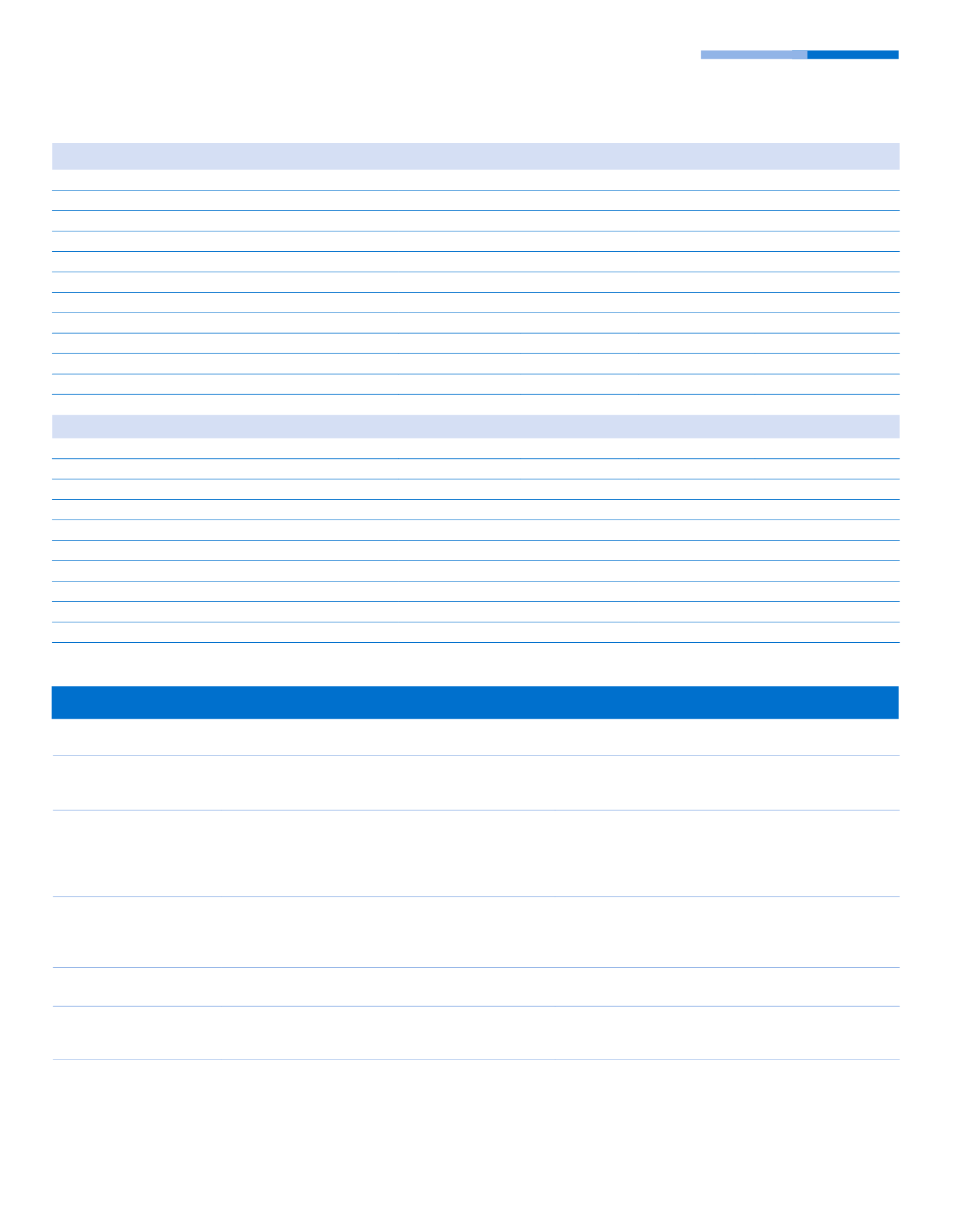

125
(EN22) Wastewater
U.M.
2013
2014
2015
Total gray water
m
3
3,006,614
3,093,883
3,293,164
- discharged at sea
2,986,358
3,081,920
3,246,135
- landed ashore
20,256
11,963
47,029
Total sewage
589,930
509,625
633,920
- discharged at sea
587,801
505,958
632,287
- landed ashore
2,129
3,667
1,633
Total bilge water
33,637
33,137
36,739
- discharged at sea
32,049
31,786
33,971
- landed ashore
1,588
1,351
2,768
Total wastewater per person per day
liters
223
220
222
- total gray water
186
189
186
- total sewage
37
31
36
(EN23) Waste produced
U.M.
2013
2014
2015
Total shipboard waste
m
3
131,067
129,312
131,610
- total hazardous waste
metric tons
unavailable
776
836
Total daily waste per person per day
(l/person)
8.1
7.9
7.4
Disposal methods for waste produced on board
%
Discharged at sea
11
9
12
Landed ashore
73
80
81
Incinerated
16
11
7
Waste recycled by category
%
Cat. A (plastic) & cat. C (domestic waste)
2.6
7.1
7.4
Cat. D (cooking oil)
41
64
53.7
Cat. F (operational waste) (*)
15
17
18
(*) All hazardous and non-hazardous solid wastes not covered by the other categories. This includes slurries, materials used for normal maintenance, cargo stowage and handling, as well as cleaning agents and additives.
Marpol category
Type of garbage
Method of disposal
A - Plastic
Plastic materials.
Collected on board in separate containers, subsequently treated
in compactors to reduce volume and then discharged at port
reception facilities.
B - Food
Food wastes.
(fruit, vegetables, dairy products, meat products and fish etc.)
Collected on board separately and treated in the pulper for
processing in compliance with overboard discharge requirements
(distance from the coast: 3 nautical miles and 12 nautical miles
inside IMO-defined special areas). Alternatively, discharged at
suitable port reception facilities.
C - Domestic wastes
Material generated in the accommodation spaces on board
the ship, except for gray water.
Separation at source of: paper, glass, crockery, metal and
aluminum. Specificwaste reduction treatment for each particular
type: pulping, crushing and/or compacting, incineration
(including aerosol cans) and discharge at port reception facilities.
D - Cooking oil
Any type of edible oil or animal fat used or intended to be used
for the preparation or cooking of food.
Collected on board separately and discharged at port reception
facilities.
E - Incinerator ashes
Ash and clinkers resulting from shipboard incinerators used for
the incineration of garbage, except for plastic products which
may contain toxic or heavy metal residues.
Collected on board separately and discharged at port reception
facilities.
F - Operational
All hazardous and non-hazardous solid wastes not covered by
the previous categories. This includes slurries, materials used
for normal maintenance, cargo stowage and handling, as well
as cleaning agents and additives.
Collected on board separately based on type, classificationand
assigned EuropeanWaste Code (EWC), then discharged at port
reception facilities. This does not include potentially infectious
waste from the medical infirmarieson board or oily rags used
in the engine room, which are incinerated on board.
SHIPBOARD WASTE CATEGORIES (MARPOL)
















